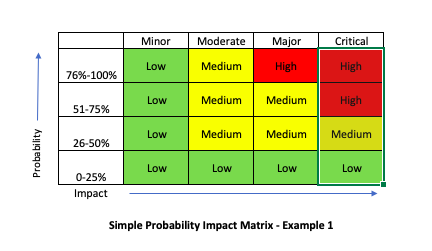
Make sure to document all the risks that have been predicted and asses the priorities of the risks.

It would help if you documented their input about what they think may go wrong on the project. You can get the whole project team, stakeholders and sponsors to plot risks to the project. Then get your entire Project Management Team to identify every risk and prioritise risks, too. Develop an extensively detailed project charter that should include project vision, objectives and goals, scope and deliverables. To begin with, managing risks, you must clearly define the expected project deliverables. You have to ensure that you identify risks at each phase of the project. Risk Management in Projects deals with identifying, analysing, prioritising and mitigating risks. Tracking risks beforehand will ensure the maximum success of a project. You should understand that effective Risk Management can make a project successful or fail. They can also ensure that the lessons learned can be utilised in future projects. Risk tracking is performed so the Project Management Team can respond effectively and may make the necessary corrections. A Risk Management plan will help you identify and take advantage of positive risks. When the team follows for risks, they can also come across positive risks that are not harmful to the project but beneficial. So, they can develop corresponding mitigation or response plans to these issues and reduce the negative impacts on the project. The Project Management Team, including Project Managers, are responsible for tracking risks on time. The impact of the risk on a project is strongly correlated with its scope and complexity. The Project Managers should be capable of proactively predicting, assessing and resolving the issues/risks in the project. Risks can be addressed by developing a detailed Risk Management plan. Risks are an inherent part of any Project Management task. Risks can arise anytime in the Life Cycle of projects that can affect the project schedule, cost, and resources. The Risk Management process deals with preparing for resolving unknown issues. This will help Project Managers prepare their risk mitigation plans and be helpful if you’re a PMP aspirant.Ī) Why should you track risk in projects?ģ) What are the seven elements of Risk Management Process?Ĥ) Tools and techniques needed in Project Risk Managementĥ) Key deliverables for Project Risk Management In this blog, we will understand all the elements of a Risk Management plan. process PMP Risk management is the process of identifying project risks, planning, monitoring, and managing projects in Project Management to give the perfect outcomes.

Otherwise, inefficient Project Management processes cause nearly 12% wastage of organisational resources.
#Pmp risk probability and impact matrix professional#
If you are Project Management Professional (PMP) credential holder, you know that the PMP exam tests your knowledge of Risk Management. Also, this type of thinking is just being cautious. It helps the Project Manager and the project team to carry out Risk Management activities without any hassle. Thus, as a Project Manager, it is your job to identify risks and develop a PMP Risk Management plan to overcome unforeseen adversities in a project. Projects always have unexpected issues and risks that are inevitable.


 0 kommentar(er)
0 kommentar(er)
